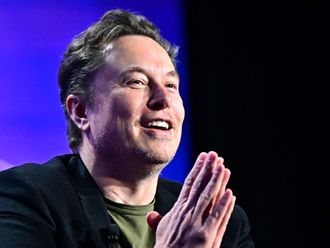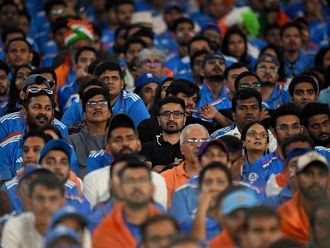The times, as Bob Dylan would sing, they are a-changin’. That the Middle East is looking East is old news. Pundits have been obsessing about the shift in balance of power from West to the East for years now. You’ve got to be blind to miss the ascent of China, India and others over the past decade or two. However, even those watching the rebirth of Asia hardly seem to realise the pace at which it is happening.
The region isn’t merely looking eastwards, firming ties with China, India and other emerging players, Gulf oil and money are playing a crucial role in the Asian resurgence. At the same time, Asian players are investing their expertise and human resources in the continuing development across the Gulf. Of course, the frenetic pace of growth and building that had turned much of the Gulf into a beehive and Dubai ‘the crane capital of the world’ some years ago was affected by the sickness that spread from Wall Street. But the region has been quick to recover from the shock and awe of the self-inflicted misery of the world’s largest economy. You do not see that many cranes any more in Dubai, but it’s certainly back in the business.
The Dubai airport is busier than ever as it expands itself, perpetually pouring out a sea of humanity. And the Gulf finds itself at the global centre stage. The US and Europe that between themselves control and run the world economy are still reeling from the 2008 bloodbath. The continuing unravelling of the European Union is only matched by the freefall of its once invincible currency.
The West has been bleeding away its centuries-old economic clout and China and other fellow travellers are the beneficiaries. The Gulf states are reaching out to the East to revive ties that go back thousands of years. The Arabs have travelled and traded between the East and West for centuries.
The fabled ‘Silk Route’ that connected the Middle East and Asia used to be the main street of the global bazaar. With the arrival of Islam and Muslim rule stretching to the far corners of the world, it only grew in eminence. Today, those historic ties are being revived in myriad ways as old power centres crumble and new geopolitical and economic realities take shape. Bridges are being built between the East and West, literally.
Turkish premier Recep Erdogan was recently in Beijing to take an already robust relationship to the next level. One of the many joint projects fast taking shape is a $35 billion (Dh128.5 billion) high-speed rail network that will connect China with Turkey and beyond with Europe as far as Britain and Spain, besides many central Asian states on the way.
There’s also talk of reviving the pre-First World War Berlin-Baghdad rail link on the one hand and the old Hejaz rail network that once connected Turkey with the holy cities of Islam on the other. Saudi Arabia has been working on the giant railway network that will connect Makkah and Madinah with Riyadh and other major cities in the kingdom, which in turn would join the Gulf Cooperation Council rail network.
Connecting the dots, wouldn’t you say the world is undergoing a dramatic transformation? The Middle East of course still remains dependent — perhaps more than the rest of the world — on the US-controlled financial system. Most Gulf currencies remain pegged to the almighty dollar, largely because the greenback is the currency in which the world does its business.
However, the region has started looking beyond its traditional partners and ‘allies’ to engage the rising stars of the developing world. Many from Bric (Brazil, Russia, India and China) and triple AAA (Asia, Africa and Americas) groups, including Turkey, Brazil, Argentina and South Africa, are part of the new equation. Incidentally, the 2012 IMF outlook projected positive growth for these regions while it warned of negative growth in most European economies. Economic tectonic plates are moving and possibilities are endless.
A recent New York Times article tried to make sense of the phenomenon. The Dubai-datelined report titled, A modern Silk Road between Asia and the Middle East, talks of projects and ventures worth hundreds of billions of dollars between Gulf and Asian nations. Hundreds of Asian investment bankers and experts have moved to Dubai as they calibrate a new Middle East-Asia partnership.
“Traders centuries ago brought silks and other goods from China by land along caravan trails and sea passages plied by sailing dhows. As the West waxed in wealth and China waned, the old routes waned with it. But now the pendulum is swinging back and the Middle East, especially the Gulf, is again growing much closer to Asia,” reported the Times.
In the past decade alone, Gulf-Asia trade has grown 700 per cent and more than half of the region’s trade is now with Asia. Clearly, that’s where the action is. The ever enterprising Dubai is trying to make the most of the new trend as it presents itself as the new global hub and caravanserai between the Middle East and Asia.
The number of Chinese in Dubai has shot up to 150,000, not to mention 2,000 Chinese firms. It is the same case with other Asian players including South Korea, which is involved in nuclear power projects.
However, as the Times puts it, it is oil and natural gas from Saudi Arabia, the UAE, Qatar, Kuwait (and Iran) that form the glue that binds the Gulf-Asia trade. Gulf oil is fuelling the fast-growing Asian economies, just as it has fuelled western economies all these years.
Last year, 55 per cent of Saudi crude exports went to the Far East against 16 per cent for the US and just 4 per cent for Europe. And this may be just the beginning. It’s estimated that oil exports this year could earn $750 billion for Gulf oil producers, thanks to the growing global demand and high prices. Booming trade and surging oil revenues are in turn being invested back in new business initiatives with Asia. The Gulf is the beneficiary of the metamorphosis in world economy.
The world is at a tipping point. After centuries of dispossession and being used as pawns in the games of world powers, the Arab and Muslim nations have a historic opportunity to take charge of their destiny. The Arabs must turn their riches and growing economic ties with emerging players into a more balanced, mutually respectful strategic partnership. The oil will not flow forever. While it does, they must invest it in building institutions and infrastructure that will empower their future generations and build a better and more just world.
Aijaz Zaka Syed is a Gulf based writer. Follow him on twitter.com/aijazzakasyed









